Interpreting Court Song in Uganda
A critical interpretation of essential Kiganda royal court songs that examines how the meanings of their lyrics enter into dynamic dialogue with contemporary national politics in Uganda. Lyric interpretation, which Damascus Kafumbe defines as a process of creative renewal that infuses vitality into songs, enables interpreters and analysts to derive a multiplicity of meanings from songs instead of being limited to a single literal narrative. As he and his research collaborators demonstrate, the process extends the life of a song by allowing it to generate new versions, meanings, and relevance. Kafumbe examines how lyric interpretation serves to renew the lives of twenty-one songs from the repertoires of royal court musicians of the Kingdom of Buganda, arguing that the meanings of these songs are not singular, static, and monolithic but rather dynamic and multivalent. Through extensive research within past and present contexts, Kafumbe presents a series of unique perspectives on the ways Kiganda court songs reflect varied kinds of power relations. These meanings, which surface via lyric interpretation, come from daily interactions among citizens and between leaders and subjects. This interpretive process helps illuminate truths and clarify myths about the power dynamics that shape political life in present-day Uganda, highlighting the relevance of court song lyrics to contemporary national contexts. By engaging with the book's wide range of voices, readers will learn to appreciate these songs, their historical and contemporary contexts, and their composer-performers' stories and interpretations more fully. This book is available as Open Access under the Creative Commons license CC BY-NC-ND.
Joy to the World
Joy to the World: For the Church and Sunday School, compiled by Edwin Othello Excell, is a classic collection of hymns intended for congregational singing and religious education. This volume, originally published in 1915, features a wide selection of traditional hymns and gospel songs suitable for church services, Sunday school classes, and personal devotion. The collection aims to provide accessible and uplifting music for worshippers of all ages. Excell's compilation includes both familiar favorites and lesser-known gems, carefully chosen to inspire faith and encourage participation in musical worship. "Joy to the World" serves as a valuable resource for churches seeking to enrich their musical repertoire and for individuals seeking a deeper connection with their faith through song.This work has been selected by scholars as being culturally important, and is part of the knowledge base of civilization as we know it. This work was reproduced from the original artifact, and remains as true to the original work as possible. Therefore, you will see the original copyright references, library stamps (as most of these works have been housed in our most important libraries around the world), and other notations in the work.This work is in the public domain in the United States of America, and possibly other nations. Within the United States, you may freely copy and distribute this work, as no entity (individual or corporate) has a copyright on the body of the work.As a reproduction of a historical artifact, this work may contain missing or blurred pages, poor pictures, errant marks, etc. Scholars believe, and we concur, that this work is important enough to be preserved, reproduced, and made generally available to the public. We appreciate your support of the preservation process, and thank you for being an important part of keeping this knowledge alive and relevant.
The English and Scottish Popular Ballads Volume V1
"The English and Scottish Popular Ballads" is a comprehensive collection of traditional ballads, meticulously compiled by Francis James Child and enriched by the scholarly contributions of George Lyman Kittredge. This volume represents a significant contribution to the study of folklore and ethnomusicology. These ballads, passed down through generations, offer a rich tapestry of stories reflecting the social, historical, and cultural fabric of England and Scotland. From tales of love and loss to accounts of heroic deeds and supernatural encounters, the ballads capture the imagination and provide invaluable insights into the lives and beliefs of ordinary people. This collection remains an essential resource for scholars, students, and anyone interested in the enduring power of folk tradition. This work has been selected by scholars as being culturally important, and is part of the knowledge base of civilization as we know it. This work was reproduced from the original artifact, and remains as true to the original work as possible. Therefore, you will see the original copyright references, library stamps (as most of these works have been housed in our most important libraries around the world), and other notations in the work.This work is in the public domain in the United States of America, and possibly other nations. Within the United States, you may freely copy and distribute this work, as no entity (individual or corporate) has a copyright on the body of the work.As a reproduction of a historical artifact, this work may contain missing or blurred pages, poor pictures, errant marks, etc. Scholars believe, and we concur, that this work is important enough to be preserved, reproduced, and made generally available to the public. We appreciate your support of the preservation process, and thank you for being an important part of keeping this knowledge alive and relevant.
A Century of Russian Song, From Glinka to Rachmaninoff
璽€œA Century of Russian Song, From Glinka to Rachmaninoff璽€ presents a carefully curated collection of fifty songs, spanning a pivotal era in Russian musical history. Edited by Kurt Schindler, this volume offers a comprehensive overview of the evolution of Russian vocal music, showcasing the works of iconic composers such as Glinka and Rachmaninoff. This collection is an invaluable resource for singers, music students, and enthusiasts interested in exploring the rich tapestry of Russian song. Each piece reflects the unique cultural and historical context of its time, providing insight into the development of Russian musical identity. Discover the beauty and depth of Russian song through this thoughtfully compiled and edited anthology.This work has been selected by scholars as being culturally important, and is part of the knowledge base of civilization as we know it. This work was reproduced from the original artifact, and remains as true to the original work as possible. Therefore, you will see the original copyright references, library stamps (as most of these works have been housed in our most important libraries around the world), and other notations in the work.This work is in the public domain in the United States of America, and possibly other nations. Within the United States, you may freely copy and distribute this work, as no entity (individual or corporate) has a copyright on the body of the work.As a reproduction of a historical artifact, this work may contain missing or blurred pages, poor pictures, errant marks, etc. Scholars believe, and we concur, that this work is important enough to be preserved, reproduced, and made generally available to the public. We appreciate your support of the preservation process, and thank you for being an important part of keeping this knowledge alive and relevant.
Hymns Composed On Various Subjects
"Hymns Composed On Various Subjects, With the Author's Experience, the Supplement, and Appendix" is a collection of hymns intended for devotional use. Reflecting the theological perspectives and spiritual sentiments of its time, this volume offers a glimpse into the religious practices and beliefs of early 19th-century Christians. The hymns cover a range of subjects, providing solace, inspiration, and a means of expressing faith through song. The inclusion of the author's experience and supplementary materials adds depth to the collection, making it a valuable resource for those interested in the history of hymnody and religious expression.This work has been selected by scholars as being culturally important, and is part of the knowledge base of civilization as we know it. This work was reproduced from the original artifact, and remains as true to the original work as possible. Therefore, you will see the original copyright references, library stamps (as most of these works have been housed in our most important libraries around the world), and other notations in the work.This work is in the public domain in the United States of America, and possibly other nations. Within the United States, you may freely copy and distribute this work, as no entity (individual or corporate) has a copyright on the body of the work.As a reproduction of a historical artifact, this work may contain missing or blurred pages, poor pictures, errant marks, etc. Scholars believe, and we concur, that this work is important enough to be preserved, reproduced, and made generally available to the public. We appreciate your support of the preservation process, and thank you for being an important part of keeping this knowledge alive and relevant.
The Essex Hall Hymn and Tune Book
The Essex Hall Hymn and Tune Book, compiled by J Westwood Tosh, is a treasure trove of 19th-century religious music. Designed for use in Sunday schools, churches, and homes, this collection offers a diverse range of hymns and tunes intended to inspire and uplift. The book provides a valuable glimpse into the musical tastes and spiritual practices of the late 19th century, offering a rich resource for those interested in the history of hymnody and Christian worship. With its focus on accessibility and congregational singing, "The Essex Hall Hymn and Tune Book" represents a significant contribution to the musical life of its time, preserving melodies and harmonies that continue to resonate today.This work has been selected by scholars as being culturally important, and is part of the knowledge base of civilization as we know it. This work was reproduced from the original artifact, and remains as true to the original work as possible. Therefore, you will see the original copyright references, library stamps (as most of these works have been housed in our most important libraries around the world), and other notations in the work.This work is in the public domain in the United States of America, and possibly other nations. Within the United States, you may freely copy and distribute this work, as no entity (individual or corporate) has a copyright on the body of the work.As a reproduction of a historical artifact, this work may contain missing or blurred pages, poor pictures, errant marks, etc. Scholars believe, and we concur, that this work is important enough to be preserved, reproduced, and made generally available to the public. We appreciate your support of the preservation process, and thank you for being an important part of keeping this knowledge alive and relevant.
Hymns From the German
璽€œHymns From the German璽€ is a collection of translated hymns, primarily from German to English. Rendered by Frances Elizabeth Cox, this volume presents a selection of devotional songs intended to enrich spiritual life. These hymns, deeply rooted in Christian tradition, offer solace, inspiration, and a connection to the divine. The collection showcases a variety of themes, including praise, repentance, faith, and hope. Cox璽€(TM)s translations capture the essence of the original German texts while rendering them accessible to English-speaking audiences.This collection provides valuable insight into 19th-century religious sentiment and the cultural exchange of spiritual ideas through translation. Readers interested in hymnody, religious poetry, and the influence of German spirituality will find this collection to be a significant and moving testament to the enduring power of faith expressed through song.This work has been selected by scholars as being culturally important, and is part of the knowledge base of civilization as we know it. This work was reproduced from the original artifact, and remains as true to the original work as possible. Therefore, you will see the original copyright references, library stamps (as most of these works have been housed in our most important libraries around the world), and other notations in the work.This work is in the public domain in the United States of America, and possibly other nations. Within the United States, you may freely copy and distribute this work, as no entity (individual or corporate) has a copyright on the body of the work.As a reproduction of a historical artifact, this work may contain missing or blurred pages, poor pictures, errant marks, etc. Scholars believe, and we concur, that this work is important enough to be preserved, reproduced, and made generally available to the public. We appreciate your support of the preservation process, and thank you for being an important part of keeping this knowledge alive and relevant.
Horae Germanicae
Horae Germanicae, by Henry Mills, is a collection of translated German hymns, rendered into English verse. Published in 1845, this volume offers a selection of devotional poetry intended for religious contemplation and musical accompaniment. Mills' work provides a window into the rich tradition of German hymnody, making it accessible to an English-speaking audience. This collection is valuable for those interested in the history of hymnody, religious poetry, and the cross-cultural exchange of sacred music. "Horae Germanicae" preserves the spiritual essence of the original German texts while presenting them in a new linguistic form.This work has been selected by scholars as being culturally important, and is part of the knowledge base of civilization as we know it. This work was reproduced from the original artifact, and remains as true to the original work as possible. Therefore, you will see the original copyright references, library stamps (as most of these works have been housed in our most important libraries around the world), and other notations in the work.This work is in the public domain in the United States of America, and possibly other nations. Within the United States, you may freely copy and distribute this work, as no entity (individual or corporate) has a copyright on the body of the work.As a reproduction of a historical artifact, this work may contain missing or blurred pages, poor pictures, errant marks, etc. Scholars believe, and we concur, that this work is important enough to be preserved, reproduced, and made generally available to the public. We appreciate your support of the preservation process, and thank you for being an important part of keeping this knowledge alive and relevant.
The Children’s Hymnal
The Children's Hymnal, originally published in 1881 by the Church of Scotland, is a collection of hymns designed for use in children's religious education and worship. This hymnal provides a selection of songs tailored for young voices, aiming to instill faith and moral values through music. With accompanying tunes, it served as a valuable resource for Sunday schools, church services, and family devotions. The hymns reflect the theological and cultural context of the late 19th century, offering insights into the religious practices and beliefs of the time. "The Children's Hymnal" preserves a piece of religious history, showcasing the importance of music in shaping the spiritual lives of children.This work has been selected by scholars as being culturally important, and is part of the knowledge base of civilization as we know it. This work was reproduced from the original artifact, and remains as true to the original work as possible. Therefore, you will see the original copyright references, library stamps (as most of these works have been housed in our most important libraries around the world), and other notations in the work.This work is in the public domain in the United States of America, and possibly other nations. Within the United States, you may freely copy and distribute this work, as no entity (individual or corporate) has a copyright on the body of the work.As a reproduction of a historical artifact, this work may contain missing or blurred pages, poor pictures, errant marks, etc. Scholars believe, and we concur, that this work is important enough to be preserved, reproduced, and made generally available to the public. We appreciate your support of the preservation process, and thank you for being an important part of keeping this knowledge alive and relevant.
Sacred Hymns On Various Subjects
"Sacred Hymns On Various Subjects," compiled by John Murlin, offers a collection of devotional verses intended for spiritual reflection and communal worship. Published in 1782, these hymns provide a window into the religious sentiments and lyrical expressions of the late 18th century. Murlin's collection reflects the theological concerns and poetic sensibilities prevalent during a period of significant religious and social change. The hymns cover a range of themes, inviting readers to contemplate divine grace, redemption, and the Christian life. This volume preserves a valuable record of hymnody from the era, appealing to those interested in religious history, hymnology, and the ongoing tradition of sacred music.This work has been selected by scholars as being culturally important, and is part of the knowledge base of civilization as we know it. This work was reproduced from the original artifact, and remains as true to the original work as possible. Therefore, you will see the original copyright references, library stamps (as most of these works have been housed in our most important libraries around the world), and other notations in the work.This work is in the public domain in the United States of America, and possibly other nations. Within the United States, you may freely copy and distribute this work, as no entity (individual or corporate) has a copyright on the body of the work.As a reproduction of a historical artifact, this work may contain missing or blurred pages, poor pictures, errant marks, etc. Scholars believe, and we concur, that this work is important enough to be preserved, reproduced, and made generally available to the public. We appreciate your support of the preservation process, and thank you for being an important part of keeping this knowledge alive and relevant.
The English Country Dance, Graded Series. Containing the Description of the Dances Together With the Tunes by Cecil J. Sharp
璽€œThe English Country Dance, Graded Series, Volume 1璽€ is a valuable resource for anyone interested in traditional English folk dance. Compiled and described by Cecil J. Sharp, a key figure in the early 20th-century folk revival, this volume provides detailed instructions and musical scores for a variety of country dances. Sharp's meticulous notation captures the essence of these dances, preserving them for future generations. This book is not only a practical guide for dancers and musicians but also an important historical document, offering insights into the social customs and musical traditions of rural England. It remains a classic reference for dance enthusiasts, researchers, and educators.This work has been selected by scholars as being culturally important, and is part of the knowledge base of civilization as we know it. This work was reproduced from the original artifact, and remains as true to the original work as possible. Therefore, you will see the original copyright references, library stamps (as most of these works have been housed in our most important libraries around the world), and other notations in the work.This work is in the public domain in the United States of America, and possibly other nations. Within the United States, you may freely copy and distribute this work, as no entity (individual or corporate) has a copyright on the body of the work.As a reproduction of a historical artifact, this work may contain missing or blurred pages, poor pictures, errant marks, etc. Scholars believe, and we concur, that this work is important enough to be preserved, reproduced, and made generally available to the public. We appreciate your support of the preservation process, and thank you for being an important part of keeping this knowledge alive and relevant.
The Lesser Hymnal
The Lesser Hymnal is a carefully curated collection of hymns, primarily selected from the standard hymn-book of the Methodist Episcopal Church. Published in 1875, this hymnal reflects the musical and spiritual practices of the church during the late 19th century. It offers a glimpse into the religious life and worship traditions of the Methodist Episcopal community. This collection serves as a valuable historical artifact, providing insights into the hymns favored and sung within the Methodist Episcopal Church, showcasing the theological and lyrical content that shaped their devotional experiences. For scholars, historians, and those interested in religious music and Methodist history, The Lesser Hymnal offers a unique and important resource.This work has been selected by scholars as being culturally important, and is part of the knowledge base of civilization as we know it. This work was reproduced from the original artifact, and remains as true to the original work as possible. Therefore, you will see the original copyright references, library stamps (as most of these works have been housed in our most important libraries around the world), and other notations in the work.This work is in the public domain in the United States of America, and possibly other nations. Within the United States, you may freely copy and distribute this work, as no entity (individual or corporate) has a copyright on the body of the work.As a reproduction of a historical artifact, this work may contain missing or blurred pages, poor pictures, errant marks, etc. Scholars believe, and we concur, that this work is important enough to be preserved, reproduced, and made generally available to the public. We appreciate your support of the preservation process, and thank you for being an important part of keeping this knowledge alive and relevant.
A New Version of the Psalms of David
A New Version of the Psalms of David, Fitted to the Tunes Used in Churches, published in 1754, presents a metrical rendition of the Psalms intended for congregational singing. Authored by Nicholas Brady, this version adapts the Psalms into a format suitable for use with popular church tunes of the era. This collection reflects the ongoing tradition of reinterpreting and adapting biblical texts for contemporary worship practices. Brady璽€(TM)s work offers insight into the musical and liturgical preferences of 18th-century Christian communities, providing a valuable resource for understanding the historical development of hymnody and the role of music in religious expression.This work has been selected by scholars as being culturally important, and is part of the knowledge base of civilization as we know it. This work was reproduced from the original artifact, and remains as true to the original work as possible. Therefore, you will see the original copyright references, library stamps (as most of these works have been housed in our most important libraries around the world), and other notations in the work.This work is in the public domain in the United States of America, and possibly other nations. Within the United States, you may freely copy and distribute this work, as no entity (individual or corporate) has a copyright on the body of the work.As a reproduction of a historical artifact, this work may contain missing or blurred pages, poor pictures, errant marks, etc. Scholars believe, and we concur, that this work is important enough to be preserved, reproduced, and made generally available to the public. We appreciate your support of the preservation process, and thank you for being an important part of keeping this knowledge alive and relevant.
Richard Wagner’s Rheingold
"Richard Wagner's Rheingold" is the first of the four operas that constitute Der Ring des Nibelungen. Wagner weaves together Norse mythology, epic storytelling, and complex musical themes to create a powerful and enduring work of art. This libretto offers a glimpse into the world of gods, dwarfs, and heroes, exploring themes of power, greed, and redemption. Wagner's innovative use of leitmotifs and his grand orchestral scores revolutionized the world of opera, and "Rheingold" stands as a pivotal work in the history of music drama. This English translation makes the opera accessible to a wider audience, allowing readers to delve into Wagner's rich and complex world.This work has been selected by scholars as being culturally important, and is part of the knowledge base of civilization as we know it. This work was reproduced from the original artifact, and remains as true to the original work as possible. Therefore, you will see the original copyright references, library stamps (as most of these works have been housed in our most important libraries around the world), and other notations in the work.This work is in the public domain in the United States of America, and possibly other nations. Within the United States, you may freely copy and distribute this work, as no entity (individual or corporate) has a copyright on the body of the work.As a reproduction of a historical artifact, this work may contain missing or blurred pages, poor pictures, errant marks, etc. Scholars believe, and we concur, that this work is important enough to be preserved, reproduced, and made generally available to the public. We appreciate your support of the preservation process, and thank you for being an important part of keeping this knowledge alive and relevant.
Joy to the World
Joy to the World: For the Church and Sunday School, compiled by Edwin Othello Excell, is a classic collection of hymns intended for congregational singing and religious education. This volume, originally published in 1915, features a wide selection of traditional hymns and gospel songs suitable for church services, Sunday school classes, and personal devotion. The collection aims to provide accessible and uplifting music for worshippers of all ages. Excell's compilation includes both familiar favorites and lesser-known gems, carefully chosen to inspire faith and encourage participation in musical worship. "Joy to the World" serves as a valuable resource for churches seeking to enrich their musical repertoire and for individuals seeking a deeper connection with their faith through song.This work has been selected by scholars as being culturally important, and is part of the knowledge base of civilization as we know it. This work was reproduced from the original artifact, and remains as true to the original work as possible. Therefore, you will see the original copyright references, library stamps (as most of these works have been housed in our most important libraries around the world), and other notations in the work.This work is in the public domain in the United States of America, and possibly other nations. Within the United States, you may freely copy and distribute this work, as no entity (individual or corporate) has a copyright on the body of the work.As a reproduction of a historical artifact, this work may contain missing or blurred pages, poor pictures, errant marks, etc. Scholars believe, and we concur, that this work is important enough to be preserved, reproduced, and made generally available to the public. We appreciate your support of the preservation process, and thank you for being an important part of keeping this knowledge alive and relevant.
The Lesser Hymnal
The Lesser Hymnal is a carefully curated collection of hymns, primarily selected from the standard hymn-book of the Methodist Episcopal Church. Published in 1875, this hymnal reflects the musical and spiritual practices of the church during the late 19th century. It offers a glimpse into the religious life and worship traditions of the Methodist Episcopal community. This collection serves as a valuable historical artifact, providing insights into the hymns favored and sung within the Methodist Episcopal Church, showcasing the theological and lyrical content that shaped their devotional experiences. For scholars, historians, and those interested in religious music and Methodist history, The Lesser Hymnal offers a unique and important resource.This work has been selected by scholars as being culturally important, and is part of the knowledge base of civilization as we know it. This work was reproduced from the original artifact, and remains as true to the original work as possible. Therefore, you will see the original copyright references, library stamps (as most of these works have been housed in our most important libraries around the world), and other notations in the work.This work is in the public domain in the United States of America, and possibly other nations. Within the United States, you may freely copy and distribute this work, as no entity (individual or corporate) has a copyright on the body of the work.As a reproduction of a historical artifact, this work may contain missing or blurred pages, poor pictures, errant marks, etc. Scholars believe, and we concur, that this work is important enough to be preserved, reproduced, and made generally available to the public. We appreciate your support of the preservation process, and thank you for being an important part of keeping this knowledge alive and relevant.
English Hymnology. Repr., With Additions and Corrections, From the Monthly Packet
"English Hymnology," by Louis Coutier Biggs, offers a detailed exploration of English hymns and their historical context. This edition, reprinted with additions and corrections from the Monthly Packet, delves into the rich tradition of hymn writing and its significance within Christian worship and English culture. Biggs provides insights into the origins, development, and theological underpinnings of various hymns, making it a valuable resource for students, scholars, and anyone interested in the history of religious music. The book examines the contributions of notable hymn writers and the evolving styles and themes within English hymnody. It highlights the enduring appeal of these hymns and their continued relevance in contemporary religious practice. "English Hymnology" serves as an important reference for understanding the historical and cultural impact of hymns on English-speaking communities.This work has been selected by scholars as being culturally important, and is part of the knowledge base of civilization as we know it. This work was reproduced from the original artifact, and remains as true to the original work as possible. Therefore, you will see the original copyright references, library stamps (as most of these works have been housed in our most important libraries around the world), and other notations in the work.This work is in the public domain in the United States of America, and possibly other nations. Within the United States, you may freely copy and distribute this work, as no entity (individual or corporate) has a copyright on the body of the work.As a reproduction of a historical artifact, this work may contain missing or blurred pages, poor pictures, errant marks, etc. Scholars believe, and we concur, that this work is important enough to be preserved, reproduced, and made generally available to the public. We appreciate your support of the preservation process, and thank you for being an important part of keeping this knowledge alive and relevant.
Horae Germanicae
Horae Germanicae, by Henry Mills, is a collection of translated German hymns, rendered into English verse. Published in 1845, this volume offers a selection of devotional poetry intended for religious contemplation and musical accompaniment. Mills' work provides a window into the rich tradition of German hymnody, making it accessible to an English-speaking audience. This collection is valuable for those interested in the history of hymnody, religious poetry, and the cross-cultural exchange of sacred music. "Horae Germanicae" preserves the spiritual essence of the original German texts while presenting them in a new linguistic form.This work has been selected by scholars as being culturally important, and is part of the knowledge base of civilization as we know it. This work was reproduced from the original artifact, and remains as true to the original work as possible. Therefore, you will see the original copyright references, library stamps (as most of these works have been housed in our most important libraries around the world), and other notations in the work.This work is in the public domain in the United States of America, and possibly other nations. Within the United States, you may freely copy and distribute this work, as no entity (individual or corporate) has a copyright on the body of the work.As a reproduction of a historical artifact, this work may contain missing or blurred pages, poor pictures, errant marks, etc. Scholars believe, and we concur, that this work is important enough to be preserved, reproduced, and made generally available to the public. We appreciate your support of the preservation process, and thank you for being an important part of keeping this knowledge alive and relevant.
Franklin Square Song Collection
Rediscover the charm of 19th-century song with the "Franklin Square Song Collection, Volume 8: Songs and Hymns for Schools and Homes, Nursery and Fireside." This curated collection, compiled by John Piersol McCaskey, offers a diverse array of songs and hymns intended for educational and recreational use in both school and home environments. Originally published in 1881, this volume captures the musical tastes and pedagogical approaches of the era, featuring selections suitable for young learners, family sing-alongs, and religious observance. The "Franklin Square Song Collection" preserves a valuable snapshot of American musical culture and educational practices during the late 19th century, offering a delightful glimpse into the songs that shaped the hearts and minds of generations.This work has been selected by scholars as being culturally important, and is part of the knowledge base of civilization as we know it. This work was reproduced from the original artifact, and remains as true to the original work as possible. Therefore, you will see the original copyright references, library stamps (as most of these works have been housed in our most important libraries around the world), and other notations in the work.This work is in the public domain in the United States of America, and possibly other nations. Within the United States, you may freely copy and distribute this work, as no entity (individual or corporate) has a copyright on the body of the work.As a reproduction of a historical artifact, this work may contain missing or blurred pages, poor pictures, errant marks, etc. Scholars believe, and we concur, that this work is important enough to be preserved, reproduced, and made generally available to the public. We appreciate your support of the preservation process, and thank you for being an important part of keeping this knowledge alive and relevant.
The Huguenots. Gli Ugonotti. A Grand Opera in Four Acts. Words by Scribe and Logouv?(c) [i.e. Legouv?(c)]
The Huguenots is a grand opera in four acts, with words by Scribe and Legouv?(c), and music by Giacomo Meyerbeer. Set against the backdrop of religious conflict in 16th-century France, the opera explores themes of love, betrayal, and religious persecution during the St. Bartholomew's Day Massacre. This edition presents the libretto of this iconic work, allowing readers to delve into the dramatic narrative and poetic language that accompany Meyerbeer's powerful score. A significant work in the history of opera, "The Huguenots" showcases the grandeur and spectacle of the French grand opera tradition. Its historical setting and exploration of profound human emotions continue to resonate with audiences and readers today.This work has been selected by scholars as being culturally important, and is part of the knowledge base of civilization as we know it. This work was reproduced from the original artifact, and remains as true to the original work as possible. Therefore, you will see the original copyright references, library stamps (as most of these works have been housed in our most important libraries around the world), and other notations in the work.This work is in the public domain in the United States of America, and possibly other nations. Within the United States, you may freely copy and distribute this work, as no entity (individual or corporate) has a copyright on the body of the work.As a reproduction of a historical artifact, this work may contain missing or blurred pages, poor pictures, errant marks, etc. Scholars believe, and we concur, that this work is important enough to be preserved, reproduced, and made generally available to the public. We appreciate your support of the preservation process, and thank you for being an important part of keeping this knowledge alive and relevant.
The Essex Hall Hymn and Tune Book
The Essex Hall Hymn and Tune Book, compiled by J Westwood Tosh, is a treasure trove of 19th-century religious music. Designed for use in Sunday schools, churches, and homes, this collection offers a diverse range of hymns and tunes intended to inspire and uplift. The book provides a valuable glimpse into the musical tastes and spiritual practices of the late 19th century, offering a rich resource for those interested in the history of hymnody and Christian worship. With its focus on accessibility and congregational singing, "The Essex Hall Hymn and Tune Book" represents a significant contribution to the musical life of its time, preserving melodies and harmonies that continue to resonate today.This work has been selected by scholars as being culturally important, and is part of the knowledge base of civilization as we know it. This work was reproduced from the original artifact, and remains as true to the original work as possible. Therefore, you will see the original copyright references, library stamps (as most of these works have been housed in our most important libraries around the world), and other notations in the work.This work is in the public domain in the United States of America, and possibly other nations. Within the United States, you may freely copy and distribute this work, as no entity (individual or corporate) has a copyright on the body of the work.As a reproduction of a historical artifact, this work may contain missing or blurred pages, poor pictures, errant marks, etc. Scholars believe, and we concur, that this work is important enough to be preserved, reproduced, and made generally available to the public. We appreciate your support of the preservation process, and thank you for being an important part of keeping this knowledge alive and relevant.
Richard Wagner’s Rheingold
"Richard Wagner's Rheingold" is the first of the four operas that constitute Der Ring des Nibelungen. Wagner weaves together Norse mythology, epic storytelling, and complex musical themes to create a powerful and enduring work of art. This libretto offers a glimpse into the world of gods, dwarfs, and heroes, exploring themes of power, greed, and redemption. Wagner's innovative use of leitmotifs and his grand orchestral scores revolutionized the world of opera, and "Rheingold" stands as a pivotal work in the history of music drama. This English translation makes the opera accessible to a wider audience, allowing readers to delve into Wagner's rich and complex world.This work has been selected by scholars as being culturally important, and is part of the knowledge base of civilization as we know it. This work was reproduced from the original artifact, and remains as true to the original work as possible. Therefore, you will see the original copyright references, library stamps (as most of these works have been housed in our most important libraries around the world), and other notations in the work.This work is in the public domain in the United States of America, and possibly other nations. Within the United States, you may freely copy and distribute this work, as no entity (individual or corporate) has a copyright on the body of the work.As a reproduction of a historical artifact, this work may contain missing or blurred pages, poor pictures, errant marks, etc. Scholars believe, and we concur, that this work is important enough to be preserved, reproduced, and made generally available to the public. We appreciate your support of the preservation process, and thank you for being an important part of keeping this knowledge alive and relevant.
Sacred Hymns On Various Subjects
"Sacred Hymns On Various Subjects," compiled by John Murlin, offers a collection of devotional verses intended for spiritual reflection and communal worship. Published in 1782, these hymns provide a window into the religious sentiments and lyrical expressions of the late 18th century. Murlin's collection reflects the theological concerns and poetic sensibilities prevalent during a period of significant religious and social change. The hymns cover a range of themes, inviting readers to contemplate divine grace, redemption, and the Christian life. This volume preserves a valuable record of hymnody from the era, appealing to those interested in religious history, hymnology, and the ongoing tradition of sacred music.This work has been selected by scholars as being culturally important, and is part of the knowledge base of civilization as we know it. This work was reproduced from the original artifact, and remains as true to the original work as possible. Therefore, you will see the original copyright references, library stamps (as most of these works have been housed in our most important libraries around the world), and other notations in the work.This work is in the public domain in the United States of America, and possibly other nations. Within the United States, you may freely copy and distribute this work, as no entity (individual or corporate) has a copyright on the body of the work.As a reproduction of a historical artifact, this work may contain missing or blurred pages, poor pictures, errant marks, etc. Scholars believe, and we concur, that this work is important enough to be preserved, reproduced, and made generally available to the public. We appreciate your support of the preservation process, and thank you for being an important part of keeping this knowledge alive and relevant.
English Hymnology. Repr., With Additions and Corrections, From the Monthly Packet
"English Hymnology," by Louis Coutier Biggs, offers a detailed exploration of English hymns and their historical context. This edition, reprinted with additions and corrections from the Monthly Packet, delves into the rich tradition of hymn writing and its significance within Christian worship and English culture. Biggs provides insights into the origins, development, and theological underpinnings of various hymns, making it a valuable resource for students, scholars, and anyone interested in the history of religious music. The book examines the contributions of notable hymn writers and the evolving styles and themes within English hymnody. It highlights the enduring appeal of these hymns and their continued relevance in contemporary religious practice. "English Hymnology" serves as an important reference for understanding the historical and cultural impact of hymns on English-speaking communities.This work has been selected by scholars as being culturally important, and is part of the knowledge base of civilization as we know it. This work was reproduced from the original artifact, and remains as true to the original work as possible. Therefore, you will see the original copyright references, library stamps (as most of these works have been housed in our most important libraries around the world), and other notations in the work.This work is in the public domain in the United States of America, and possibly other nations. Within the United States, you may freely copy and distribute this work, as no entity (individual or corporate) has a copyright on the body of the work.As a reproduction of a historical artifact, this work may contain missing or blurred pages, poor pictures, errant marks, etc. Scholars believe, and we concur, that this work is important enough to be preserved, reproduced, and made generally available to the public. We appreciate your support of the preservation process, and thank you for being an important part of keeping this knowledge alive and relevant.
Franklin Square Song Collection
Rediscover the charm of 19th-century song with the "Franklin Square Song Collection, Volume 8: Songs and Hymns for Schools and Homes, Nursery and Fireside." This curated collection, compiled by John Piersol McCaskey, offers a diverse array of songs and hymns intended for educational and recreational use in both school and home environments. Originally published in 1881, this volume captures the musical tastes and pedagogical approaches of the era, featuring selections suitable for young learners, family sing-alongs, and religious observance. The "Franklin Square Song Collection" preserves a valuable snapshot of American musical culture and educational practices during the late 19th century, offering a delightful glimpse into the songs that shaped the hearts and minds of generations.This work has been selected by scholars as being culturally important, and is part of the knowledge base of civilization as we know it. This work was reproduced from the original artifact, and remains as true to the original work as possible. Therefore, you will see the original copyright references, library stamps (as most of these works have been housed in our most important libraries around the world), and other notations in the work.This work is in the public domain in the United States of America, and possibly other nations. Within the United States, you may freely copy and distribute this work, as no entity (individual or corporate) has a copyright on the body of the work.As a reproduction of a historical artifact, this work may contain missing or blurred pages, poor pictures, errant marks, etc. Scholars believe, and we concur, that this work is important enough to be preserved, reproduced, and made generally available to the public. We appreciate your support of the preservation process, and thank you for being an important part of keeping this knowledge alive and relevant.
A New Version of the Psalms of David
A New Version of the Psalms of David, Fitted to the Tunes Used in Churches, published in 1754, presents a metrical rendition of the Psalms intended for congregational singing. Authored by Nicholas Brady, this version adapts the Psalms into a format suitable for use with popular church tunes of the era. This collection reflects the ongoing tradition of reinterpreting and adapting biblical texts for contemporary worship practices. Brady璽€(TM)s work offers insight into the musical and liturgical preferences of 18th-century Christian communities, providing a valuable resource for understanding the historical development of hymnody and the role of music in religious expression.This work has been selected by scholars as being culturally important, and is part of the knowledge base of civilization as we know it. This work was reproduced from the original artifact, and remains as true to the original work as possible. Therefore, you will see the original copyright references, library stamps (as most of these works have been housed in our most important libraries around the world), and other notations in the work.This work is in the public domain in the United States of America, and possibly other nations. Within the United States, you may freely copy and distribute this work, as no entity (individual or corporate) has a copyright on the body of the work.As a reproduction of a historical artifact, this work may contain missing or blurred pages, poor pictures, errant marks, etc. Scholars believe, and we concur, that this work is important enough to be preserved, reproduced, and made generally available to the public. We appreciate your support of the preservation process, and thank you for being an important part of keeping this knowledge alive and relevant.
Amazing Grace
"Amazing Grace" is one of the most beloved and recognizable hymns in the English language. Written by John Newton, a former slave trader who experienced a profound religious conversion, the hymn speaks of redemption, forgiveness, and the transformative power of faith. Its simple yet powerful lyrics resonate deeply with people from all walks of life, offering solace and hope in the face of adversity. This enduring hymn has been sung for generations, providing comfort and inspiration to countless individuals. Its message of grace and salvation continues to touch hearts and uplift spirits, making "Amazing Grace" a timeless expression of Christian faith and a testament to the enduring power of music to heal and inspire.This work has been selected by scholars as being culturally important, and is part of the knowledge base of civilization as we know it. This work was reproduced from the original artifact, and remains as true to the original work as possible. Therefore, you will see the original copyright references, library stamps (as most of these works have been housed in our most important libraries around the world), and other notations in the work.This work is in the public domain in the United States of America, and possibly other nations. Within the United States, you may freely copy and distribute this work, as no entity (individual or corporate) has a copyright on the body of the work.As a reproduction of a historical artifact, this work may contain missing or blurred pages, poor pictures, errant marks, etc. Scholars believe, and we concur, that this work is important enough to be preserved, reproduced, and made generally available to the public. We appreciate your support of the preservation process, and thank you for being an important part of keeping this knowledge alive and relevant.
Keeping Time
Keeping Time: Dialogues on music and archives in Honour of Linda Barwick explores current issues in ethnomusicology and the archiving and repatriation of ethnographic field recordings.The 19 chapters by 36 authors consider archiving practices as a site of interaction between researchers and cultural heritage communities; cross-disciplinary approaches to understanding song; and the role of musical transcription in non-Western music.This volume is international in scope with case studies with Indigenous and minority peoples from Papua New Guinea, China, India, the Torres Strait and mainland Aboriginal Australia; the latter being the focus of the majority of chapters.Topics include the revival of songs from early written sources, creation of new songs based in old genres, the concept of "sing" in other languages, spirits as the origin of song knowledge, and how to manage ethnographic records over time. Keeping Time approaches Indigenous practices from a range of disciplines, including linguistics, history and performing arts, as well as Indigenous Studies, cultural revitalisation (including reclamation of Indigenous languages), Indigenous knowledge and application to climate change.Offered in honour of Emeritus Professor Linda Barwick, the founder of the Indigenous Music, Language and Performing Arts series, Keeping Time offers a diverse range of opinions on ethnographic research practices and their value to society.There are 3 audio examples available to be listened to here: https: //open.sydneyuniversitypress.com.au/keeping_time.html
Hymns From the German
璽€œHymns From the German璽€ is a collection of translated hymns, primarily from German to English. Rendered by Frances Elizabeth Cox, this volume presents a selection of devotional songs intended to enrich spiritual life. These hymns, deeply rooted in Christian tradition, offer solace, inspiration, and a connection to the divine. The collection showcases a variety of themes, including praise, repentance, faith, and hope. Cox璽€(TM)s translations capture the essence of the original German texts while rendering them accessible to English-speaking audiences.This collection provides valuable insight into 19th-century religious sentiment and the cultural exchange of spiritual ideas through translation. Readers interested in hymnody, religious poetry, and the influence of German spirituality will find this collection to be a significant and moving testament to the enduring power of faith expressed through song.This work has been selected by scholars as being culturally important, and is part of the knowledge base of civilization as we know it. This work was reproduced from the original artifact, and remains as true to the original work as possible. Therefore, you will see the original copyright references, library stamps (as most of these works have been housed in our most important libraries around the world), and other notations in the work.This work is in the public domain in the United States of America, and possibly other nations. Within the United States, you may freely copy and distribute this work, as no entity (individual or corporate) has a copyright on the body of the work.As a reproduction of a historical artifact, this work may contain missing or blurred pages, poor pictures, errant marks, etc. Scholars believe, and we concur, that this work is important enough to be preserved, reproduced, and made generally available to the public. We appreciate your support of the preservation process, and thank you for being an important part of keeping this knowledge alive and relevant.
Creating Opera Utilising Augmented Reality and Virtual Reality Technologies
This book investigates the use of extended reality (XR) technologies to innovate the opera experience. It provides valuable contributions for undergraduate and postgraduate students, creative practice researchers, and professionals seeking to explore the intersections of technology, performance, and composition.
The Essential... Beyonc矇
The complete story of 'Queen Bey' for every Beyonc矇 superfanBeyonc矇 is one the greatest artists of all time. Performing since she was a child, she has earned megastar status both as a member of best-selling girl group Destiny's Child and as a solo act.The most-awarded musician in Grammy history, Beyonc矇's ascension to 'Queen Bey' is cast with critically acclaimed albums, a desire to explore her creativity and a willingness to push boundaries and defy expectations. Her stage performances are compelling to watch, and she is undoubtedly one of the great vocalists of our time.Outside of music she is a savvy businesswoman, one half of power couple the Carters - with husband rapper Jay-Z - social justice advocate, style icon, fashion designer and sometime actress and film director; a defining, artistic tour de force for the twenty-first century.The Essential... Beyonc矇 is her complete story; from child performer to prominent cultural figure, fully illustrated throughout with stunning, iconic images.The Essential... series celebrates the world's best-loved popular icons and cultural luminaries, and is packed with facts, quotes, photos and stories.
Amazing Grace
"Amazing Grace" is one of the most beloved and recognizable hymns in the English language. Written by John Newton, a former slave trader who experienced a profound religious conversion, the hymn speaks of redemption, forgiveness, and the transformative power of faith. Its simple yet powerful lyrics resonate deeply with people from all walks of life, offering solace and hope in the face of adversity. This enduring hymn has been sung for generations, providing comfort and inspiration to countless individuals. Its message of grace and salvation continues to touch hearts and uplift spirits, making "Amazing Grace" a timeless expression of Christian faith and a testament to the enduring power of music to heal and inspire.This work has been selected by scholars as being culturally important, and is part of the knowledge base of civilization as we know it. This work was reproduced from the original artifact, and remains as true to the original work as possible. Therefore, you will see the original copyright references, library stamps (as most of these works have been housed in our most important libraries around the world), and other notations in the work.This work is in the public domain in the United States of America, and possibly other nations. Within the United States, you may freely copy and distribute this work, as no entity (individual or corporate) has a copyright on the body of the work.As a reproduction of a historical artifact, this work may contain missing or blurred pages, poor pictures, errant marks, etc. Scholars believe, and we concur, that this work is important enough to be preserved, reproduced, and made generally available to the public. We appreciate your support of the preservation process, and thank you for being an important part of keeping this knowledge alive and relevant.
Hymns Composed On Various Subjects
"Hymns Composed On Various Subjects, With the Author's Experience, the Supplement, and Appendix" is a collection of hymns intended for devotional use. Reflecting the theological perspectives and spiritual sentiments of its time, this volume offers a glimpse into the religious practices and beliefs of early 19th-century Christians. The hymns cover a range of subjects, providing solace, inspiration, and a means of expressing faith through song. The inclusion of the author's experience and supplementary materials adds depth to the collection, making it a valuable resource for those interested in the history of hymnody and religious expression.This work has been selected by scholars as being culturally important, and is part of the knowledge base of civilization as we know it. This work was reproduced from the original artifact, and remains as true to the original work as possible. Therefore, you will see the original copyright references, library stamps (as most of these works have been housed in our most important libraries around the world), and other notations in the work.This work is in the public domain in the United States of America, and possibly other nations. Within the United States, you may freely copy and distribute this work, as no entity (individual or corporate) has a copyright on the body of the work.As a reproduction of a historical artifact, this work may contain missing or blurred pages, poor pictures, errant marks, etc. Scholars believe, and we concur, that this work is important enough to be preserved, reproduced, and made generally available to the public. We appreciate your support of the preservation process, and thank you for being an important part of keeping this knowledge alive and relevant.
The Bible Hymn-book [compiled By H. Bonar]
The Bible Hymn-book is a collection of hymns compiled to enhance Christian worship and personal devotion. This volume offers a rich selection of songs, carefully chosen for their theological depth and musical beauty. Intended for use in both public services and private meditation, these hymns draw directly from scripture, providing a harmonious blend of biblical text and melodic expression. The collection serves as a valuable resource for congregations, choirs, and individuals seeking to deepen their spiritual connection through song. Discover timeless hymns that have resonated with believers for generations, making The Bible Hymn-book a treasured addition to any Christian library. This work has been selected by scholars as being culturally important, and is part of the knowledge base of civilization as we know it. This work was reproduced from the original artifact, and remains as true to the original work as possible. Therefore, you will see the original copyright references, library stamps (as most of these works have been housed in our most important libraries around the world), and other notations in the work.This work is in the public domain in the United States of America, and possibly other nations. Within the United States, you may freely copy and distribute this work, as no entity (individual or corporate) has a copyright on the body of the work.As a reproduction of a historical artifact, this work may contain missing or blurred pages, poor pictures, errant marks, etc. Scholars believe, and we concur, that this work is important enough to be preserved, reproduced, and made generally available to the public. We appreciate your support of the preservation process, and thank you for being an important part of keeping this knowledge alive and relevant.
The Legendary Ballads Of England And Scotland
璽€œThe Legendary Ballads of England and Scotland璽€ is a timeless collection of traditional folk songs and narrative poems that capture the spirit of the British Isles. These ballads, passed down through generations, tell tales of love, loss, heroism, and adventure. Featuring both English and Scottish contributions, this anthology showcases the rich cultural heritage and storytelling traditions of the region. Experience the romance, drama, and historical echoes contained within these classic verses. This collection provides insight into the social customs, beliefs, and historical events that shaped England and Scotland. A must-read for anyone interested in folklore, music, and the literary history of Great Britain.This work has been selected by scholars as being culturally important, and is part of the knowledge base of civilization as we know it. This work was reproduced from the original artifact, and remains as true to the original work as possible. Therefore, you will see the original copyright references, library stamps (as most of these works have been housed in our most important libraries around the world), and other notations in the work.This work is in the public domain in the United States of America, and possibly other nations. Within the United States, you may freely copy and distribute this work, as no entity (individual or corporate) has a copyright on the body of the work.As a reproduction of a historical artifact, this work may contain missing or blurred pages, poor pictures, errant marks, etc. Scholars believe, and we concur, that this work is important enough to be preserved, reproduced, and made generally available to the public. We appreciate your support of the preservation process, and thank you for being an important part of keeping this knowledge alive and relevant.
The Stranglers 1977-90
The Stranglers exploded onto the music scene in 1977 with their iconic debut album Rattus Norvegicus. Lazily classed as a punk band because of their notorious behaviour and outrageous lyrics, the truth was somewhat different. Many books have been written about the behaviour of the band but this book focuses in-depth on the music and lyrics of every song during the years of the original line-up and destroys the myth of mindless musical provocateurs to reveal their brilliance and dark beauty by shining a forensic light on these musical visionaries. For fans of the band, whether musically experienced or not, it is a must-read. And for fans in general of rock music in the 70s and 80s, it will highlight what makes their music stand out as special and result in them dusting down their vinyl copies of the band's records to re-acquaint themselves with their music in a new light.
English Folk Song
Explore the rich tapestry of English musical heritage with "English Folk Song" by Ruth Alice Keith. This book delves into the heart of traditional English music, offering insights into its origins, evolution, and cultural significance. Discover the stories behind the songs, the lives of the people who sang them, and the social contexts that shaped them. From ballads and sea shanties to love songs and historical narratives, this collection showcases the diversity and enduring appeal of English folk music. Whether you're a music enthusiast, a student of folklore, or simply curious about England's cultural past, "English Folk Song" provides a comprehensive and engaging introduction to this vibrant art form.This work has been selected by scholars as being culturally important, and is part of the knowledge base of civilization as we know it. This work was reproduced from the original artifact, and remains as true to the original work as possible. Therefore, you will see the original copyright references, library stamps (as most of these works have been housed in our most important libraries around the world), and other notations in the work.This work is in the public domain in the United States of America, and possibly other nations. Within the United States, you may freely copy and distribute this work, as no entity (individual or corporate) has a copyright on the body of the work.As a reproduction of a historical artifact, this work may contain missing or blurred pages, poor pictures, errant marks, etc. Scholars believe, and we concur, that this work is important enough to be preserved, reproduced, and made generally available to the public. We appreciate your support of the preservation process, and thank you for being an important part of keeping this knowledge alive and relevant.
Fisherman’s Ballads And Songs Of The Sea
璽€œFisherman's Ballads And Songs Of The Sea璽€ is a timeless collection of traditional maritime verses, offering a vivid glimpse into the lives, labors, and legends of seafarers. This anthology gathers together stirring ballads and heartfelt songs that capture the essence of life at sea, from the toils of daily work to the thrill of adventure and the ever-present dangers of the deep. These anonymous works, passed down through generations, echo with the rhythms of the ocean and the voices of those who braved its waters. Within these pages, readers will discover tales of daring voyages, tragic losses, and the enduring spirit of the men and women who have always been drawn to the sea. A valuable resource for enthusiasts of folk music, maritime history, and poetic traditions, this collection preserves the cultural heritage of seafaring communities.This work has been selected by scholars as being culturally important, and is part of the knowledge base of civilization as we know it. This work was reproduced from the original artifact, and remains as true to the original work as possible. Therefore, you will see the original copyright references, library stamps (as most of these works have been housed in our most important libraries around the world), and other notations in the work.This work is in the public domain in the United States of America, and possibly other nations. Within the United States, you may freely copy and distribute this work, as no entity (individual or corporate) has a copyright on the body of the work.As a reproduction of a historical artifact, this work may contain missing or blurred pages, poor pictures, errant marks, etc. Scholars believe, and we concur, that this work is important enough to be preserved, reproduced, and made generally available to the public. We appreciate your support of the preservation process, and thank you for being an important part of keeping this knowledge alive and relevant.
Folk Songs Of Many Nations
璽€œFolk Songs Of Many Nations璽€ is a timeless collection celebrating the rich tapestry of global musical traditions. This meticulously compiled songbook features a diverse array of folk melodies from various cultures, preserving the authentic spirit and unique characteristics of each nation's musical heritage. From lively dances to soulful ballads, the songs reflect the joys, sorrows, and everyday lives of people around the world.This collection is perfect for musicians, educators, and anyone with a passion for international music. Whether you're looking to explore new musical styles, learn about different cultures, or simply enjoy the beauty of folk melodies, 璽€œFolk Songs Of Many Nations璽€ offers a valuable and enriching experience. Discover the enduring appeal of these timeless songs and celebrate the universal language of music.This work has been selected by scholars as being culturally important, and is part of the knowledge base of civilization as we know it. This work was reproduced from the original artifact, and remains as true to the original work as possible. Therefore, you will see the original copyright references, library stamps (as most of these works have been housed in our most important libraries around the world), and other notations in the work.This work is in the public domain in the United States of America, and possibly other nations. Within the United States, you may freely copy and distribute this work, as no entity (individual or corporate) has a copyright on the body of the work.As a reproduction of a historical artifact, this work may contain missing or blurred pages, poor pictures, errant marks, etc. Scholars believe, and we concur, that this work is important enough to be preserved, reproduced, and made generally available to the public. We appreciate your support of the preservation process, and thank you for being an important part of keeping this knowledge alive and relevant.
... Six Love Songs
... Six Love Songs is a collection of art songs by Sir Landon Ronald. This songbook features a selection of romantic vocal pieces, showcasing Ronald's skill in crafting lyrical melodies and expressive harmonies. Perfect for singers and vocal enthusiasts, these songs offer a blend of technical challenge and emotional depth, appealing to both performers and audiences. Discover the beauty and passion within these timeless compositions, ideal for recitals, practice, or simply enjoying the rich tradition of classical song.This work has been selected by scholars as being culturally important, and is part of the knowledge base of civilization as we know it. This work was reproduced from the original artifact, and remains as true to the original work as possible. Therefore, you will see the original copyright references, library stamps (as most of these works have been housed in our most important libraries around the world), and other notations in the work.This work is in the public domain in the United States of America, and possibly other nations. Within the United States, you may freely copy and distribute this work, as no entity (individual or corporate) has a copyright on the body of the work.As a reproduction of a historical artifact, this work may contain missing or blurred pages, poor pictures, errant marks, etc. Scholars believe, and we concur, that this work is important enough to be preserved, reproduced, and made generally available to the public. We appreciate your support of the preservation process, and thank you for being an important part of keeping this knowledge alive and relevant.
The Legendary Ballads Of England And Scotland
璽€œThe Legendary Ballads of England and Scotland璽€ is a timeless collection of traditional folk songs and narrative poems that capture the spirit of the British Isles. These ballads, passed down through generations, tell tales of love, loss, heroism, and adventure. Featuring both English and Scottish contributions, this anthology showcases the rich cultural heritage and storytelling traditions of the region. Experience the romance, drama, and historical echoes contained within these classic verses. This collection provides insight into the social customs, beliefs, and historical events that shaped England and Scotland. A must-read for anyone interested in folklore, music, and the literary history of Great Britain.This work has been selected by scholars as being culturally important, and is part of the knowledge base of civilization as we know it. This work was reproduced from the original artifact, and remains as true to the original work as possible. Therefore, you will see the original copyright references, library stamps (as most of these works have been housed in our most important libraries around the world), and other notations in the work.This work is in the public domain in the United States of America, and possibly other nations. Within the United States, you may freely copy and distribute this work, as no entity (individual or corporate) has a copyright on the body of the work.As a reproduction of a historical artifact, this work may contain missing or blurred pages, poor pictures, errant marks, etc. Scholars believe, and we concur, that this work is important enough to be preserved, reproduced, and made generally available to the public. We appreciate your support of the preservation process, and thank you for being an important part of keeping this knowledge alive and relevant.
The Strad
Explore the rich history and intricate craftsmanship of stringed instruments with "The Strad, Volume 17." This edition offers a deep dive into the world of classical music, focusing on the violin and related instruments. Readers will discover articles and insights into performance techniques, instrument care, and the evolution of string music. A must-read for musicians, historians, and anyone passionate about the timeless beauty of classical music.This work has been selected by scholars as being culturally important, and is part of the knowledge base of civilization as we know it. This work was reproduced from the original artifact, and remains as true to the original work as possible. Therefore, you will see the original copyright references, library stamps (as most of these works have been housed in our most important libraries around the world), and other notations in the work.This work is in the public domain in the United States of America, and possibly other nations. Within the United States, you may freely copy and distribute this work, as no entity (individual or corporate) has a copyright on the body of the work.As a reproduction of a historical artifact, this work may contain missing or blurred pages, poor pictures, errant marks, etc. Scholars believe, and we concur, that this work is important enough to be preserved, reproduced, and made generally available to the public. We appreciate your support of the preservation process, and thank you for being an important part of keeping this knowledge alive and relevant.
Semiramide
Semiramide is a grand opera in two acts by Gioachino Rossini to an Italian libretto by Gaetano Rossi, based on Voltaire's tragedy Semiramis. The opera is set in ancient Babylon and tells the story of Semiramide, a powerful queen haunted by her past and entangled in a web of love, ambition, and intrigue. This edition presents the full libretto in English, making it accessible to a wider audience. Rossini's masterful score, combined with the dramatic storyline, makes "Semiramide" a cornerstone of the bel canto repertoire. The characters are brought to life through soaring arias and intricate ensembles, creating a truly unforgettable theatrical experience. This opera explores themes of guilt, redemption, and the destructive nature of unchecked power. "Semiramide" remains a relevant and compelling work, showcasing Rossini's genius at its finest.This work has been selected by scholars as being culturally important, and is part of the knowledge base of civilization as we know it. This work was reproduced from the original artifact, and remains as true to the original work as possible. Therefore, you will see the original copyright references, library stamps (as most of these works have been housed in our most important libraries around the world), and other notations in the work.This work is in the public domain in the United States of America, and possibly other nations. Within the United States, you may freely copy and distribute this work, as no entity (individual or corporate) has a copyright on the body of the work.As a reproduction of a historical artifact, this work may contain missing or blurred pages, poor pictures, errant marks, etc. Scholars believe, and we concur, that this work is important enough to be preserved, reproduced, and made generally available to the public. We appreciate your support of the preservation process, and thank you for being an important part of keeping this knowledge alive and relevant.
Rossini’s Opera Il Barbiere Di Siviglia
Immerse yourself in Gioacchino Rossini's timeless opera, "Il Barbiere di Siviglia," with this meticulously crafted edition. This volume presents the complete Italian text alongside a new English translation, allowing readers to fully appreciate the wit and beauty of the original libretto. Included are the musical scores for all the principal airs, making it an invaluable resource for singers, musicians, and opera enthusiasts alike. Experience the brilliance of Rossini's composition as you follow the story of Figaro, Rosina, and Count Almaviva. This edition captures the essence of the opera's enduring appeal, offering a comprehensive and accessible approach to one of the world's most beloved musical masterpieces. Whether you are a seasoned performer or a newcomer to the world of opera, this volume provides everything you need to delve into the heart of "Il Barbiere di Siviglia."This work has been selected by scholars as being culturally important, and is part of the knowledge base of civilization as we know it. This work was reproduced from the original artifact, and remains as true to the original work as possible. Therefore, you will see the original copyright references, library stamps (as most of these works have been housed in our most important libraries around the world), and other notations in the work.This work is in the public domain in the United States of America, and possibly other nations. Within the United States, you may freely copy and distribute this work, as no entity (individual or corporate) has a copyright on the body of the work.As a reproduction of a historical artifact, this work may contain missing or blurred pages, poor pictures, errant marks, etc. Scholars believe, and we concur, that this work is important enough to be preserved, reproduced, and made generally available to the public. We appreciate your support of the preservation process, and thank you for being an important part of keeping this knowledge alive and relevant.
Fisherman’s Ballads And Songs Of The Sea
璽€œFisherman's Ballads And Songs Of The Sea璽€ is a timeless collection of traditional maritime verses, offering a vivid glimpse into the lives, labors, and legends of seafarers. This anthology gathers together stirring ballads and heartfelt songs that capture the essence of life at sea, from the toils of daily work to the thrill of adventure and the ever-present dangers of the deep. These anonymous works, passed down through generations, echo with the rhythms of the ocean and the voices of those who braved its waters. Within these pages, readers will discover tales of daring voyages, tragic losses, and the enduring spirit of the men and women who have always been drawn to the sea. A valuable resource for enthusiasts of folk music, maritime history, and poetic traditions, this collection preserves the cultural heritage of seafaring communities.This work has been selected by scholars as being culturally important, and is part of the knowledge base of civilization as we know it. This work was reproduced from the original artifact, and remains as true to the original work as possible. Therefore, you will see the original copyright references, library stamps (as most of these works have been housed in our most important libraries around the world), and other notations in the work.This work is in the public domain in the United States of America, and possibly other nations. Within the United States, you may freely copy and distribute this work, as no entity (individual or corporate) has a copyright on the body of the work.As a reproduction of a historical artifact, this work may contain missing or blurred pages, poor pictures, errant marks, etc. Scholars believe, and we concur, that this work is important enough to be preserved, reproduced, and made generally available to the public. We appreciate your support of the preservation process, and thank you for being an important part of keeping this knowledge alive and relevant.
The Triumph Of Columbus
璽€œThe Triumph Of Columbus, 璽€ as produced at the Metropolitan Opera House on October 10th, 1892, is a historical opera by Silas Gamaliel Pratt. This dramatic work commemorates Christopher Columbus's voyages and the quincentenary of his arrival in the Americas. The opera blends historical themes with operatic storytelling, providing a snapshot of late 19th-century American perspectives on Columbus's legacy. Its production at such a prestigious venue underscores the significance of Columbus in the cultural imagination of the time.This work has been selected by scholars as being culturally important, and is part of the knowledge base of civilization as we know it. This work was reproduced from the original artifact, and remains as true to the original work as possible. Therefore, you will see the original copyright references, library stamps (as most of these works have been housed in our most important libraries around the world), and other notations in the work.This work is in the public domain in the United States of America, and possibly other nations. Within the United States, you may freely copy and distribute this work, as no entity (individual or corporate) has a copyright on the body of the work.As a reproduction of a historical artifact, this work may contain missing or blurred pages, poor pictures, errant marks, etc. Scholars believe, and we concur, that this work is important enough to be preserved, reproduced, and made generally available to the public. We appreciate your support of the preservation process, and thank you for being an important part of keeping this knowledge alive and relevant.
The Bible Hymn-book [compiled By H. Bonar]
The Bible Hymn-book is a collection of hymns compiled to enhance Christian worship and personal devotion. This volume offers a rich selection of songs, carefully chosen for their theological depth and musical beauty. Intended for use in both public services and private meditation, these hymns draw directly from scripture, providing a harmonious blend of biblical text and melodic expression. The collection serves as a valuable resource for congregations, choirs, and individuals seeking to deepen their spiritual connection through song. Discover timeless hymns that have resonated with believers for generations, making The Bible Hymn-book a treasured addition to any Christian library. This work has been selected by scholars as being culturally important, and is part of the knowledge base of civilization as we know it. This work was reproduced from the original artifact, and remains as true to the original work as possible. Therefore, you will see the original copyright references, library stamps (as most of these works have been housed in our most important libraries around the world), and other notations in the work.This work is in the public domain in the United States of America, and possibly other nations. Within the United States, you may freely copy and distribute this work, as no entity (individual or corporate) has a copyright on the body of the work.As a reproduction of a historical artifact, this work may contain missing or blurred pages, poor pictures, errant marks, etc. Scholars believe, and we concur, that this work is important enough to be preserved, reproduced, and made generally available to the public. We appreciate your support of the preservation process, and thank you for being an important part of keeping this knowledge alive and relevant.
English Folk Song
Explore the rich tapestry of English musical heritage with "English Folk Song" by Ruth Alice Keith. This book delves into the heart of traditional English music, offering insights into its origins, evolution, and cultural significance. Discover the stories behind the songs, the lives of the people who sang them, and the social contexts that shaped them. From ballads and sea shanties to love songs and historical narratives, this collection showcases the diversity and enduring appeal of English folk music. Whether you're a music enthusiast, a student of folklore, or simply curious about England's cultural past, "English Folk Song" provides a comprehensive and engaging introduction to this vibrant art form.This work has been selected by scholars as being culturally important, and is part of the knowledge base of civilization as we know it. This work was reproduced from the original artifact, and remains as true to the original work as possible. Therefore, you will see the original copyright references, library stamps (as most of these works have been housed in our most important libraries around the world), and other notations in the work.This work is in the public domain in the United States of America, and possibly other nations. Within the United States, you may freely copy and distribute this work, as no entity (individual or corporate) has a copyright on the body of the work.As a reproduction of a historical artifact, this work may contain missing or blurred pages, poor pictures, errant marks, etc. Scholars believe, and we concur, that this work is important enough to be preserved, reproduced, and made generally available to the public. We appreciate your support of the preservation process, and thank you for being an important part of keeping this knowledge alive and relevant.






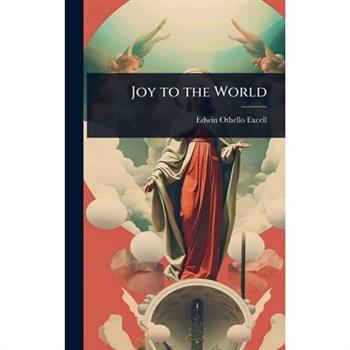



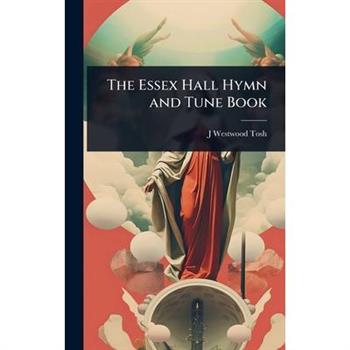
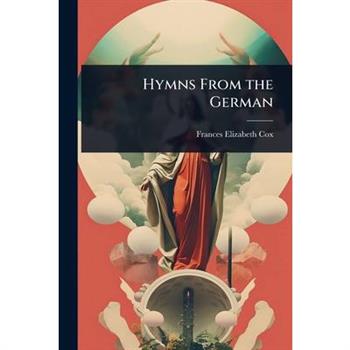

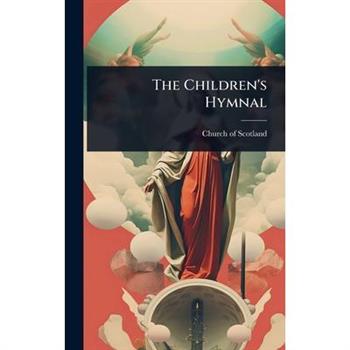
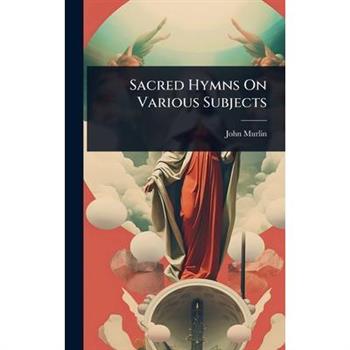
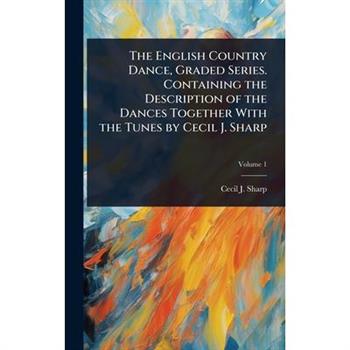
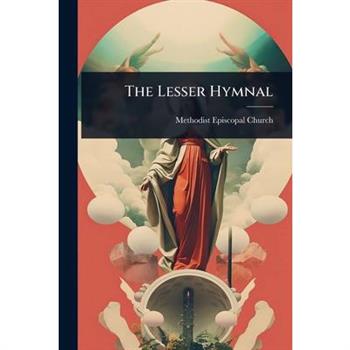
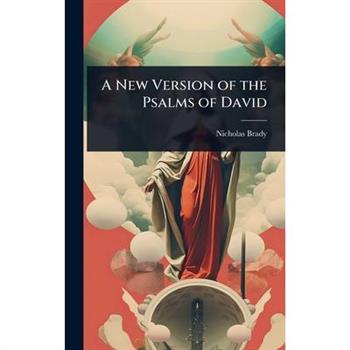


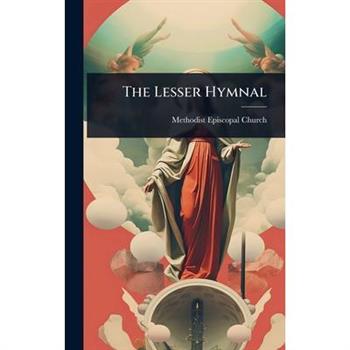
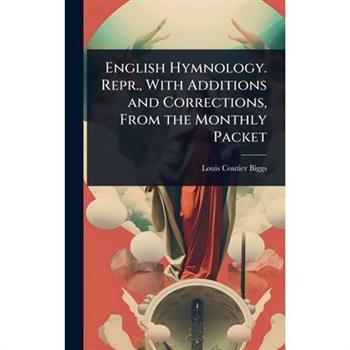
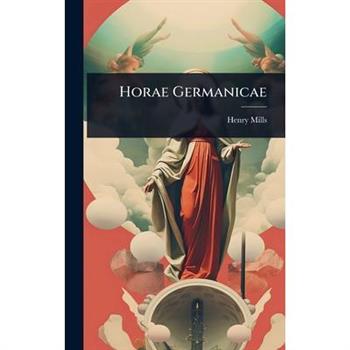
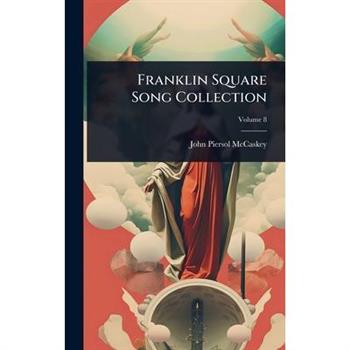
![The Huguenots. Gli Ugonotti. A Grand Opera in Four Acts. Words by Scribe and Logouv?(c) [i.e. Legouv?(c)] The Huguenots. Gli Ugonotti. A Grand Opera in Four Acts. Words by Scribe and Logouv?(c) [i.e. Legouv?(c)]](https://cdn.kingstone.com.tw/english/images/product/8668/9781024038668m.jpg?Q=039c7)


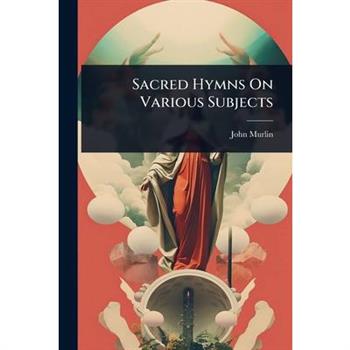
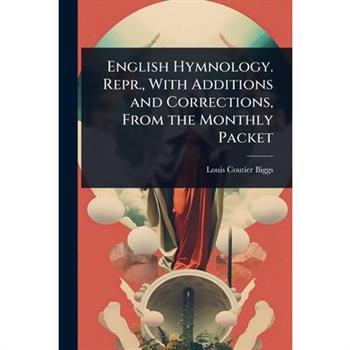
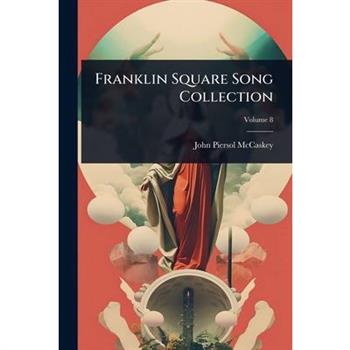
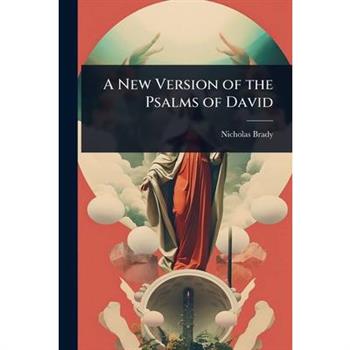
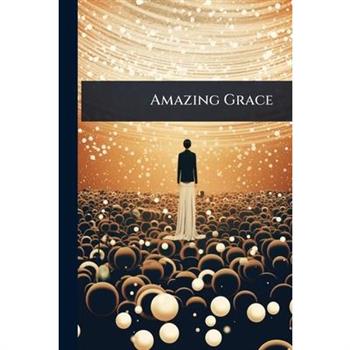

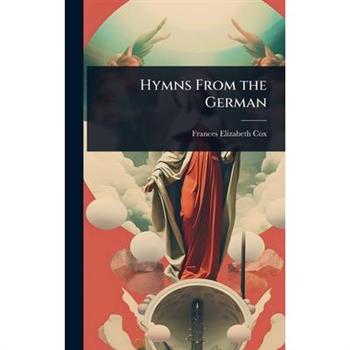

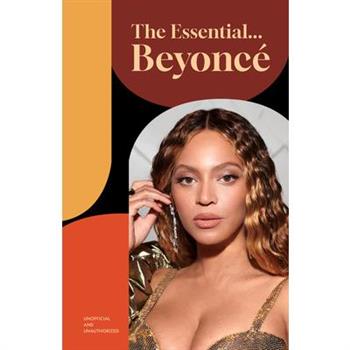

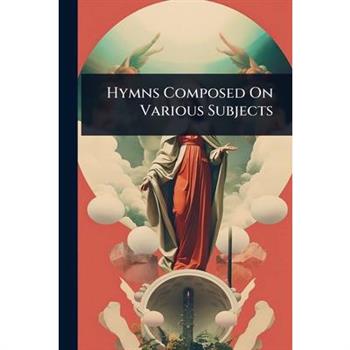
![The Bible Hymn-book [compiled By H. Bonar] The Bible Hymn-book [compiled By H. Bonar]](https://cdn.kingstone.com.tw/english/images/product/2129/9781024832129m.jpg?Q=3e589)




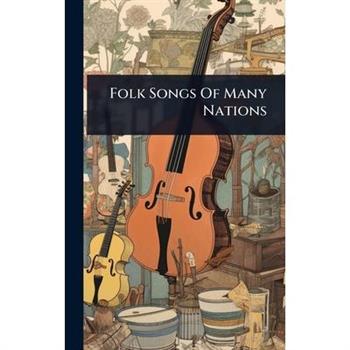


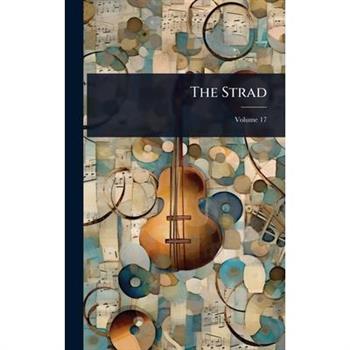
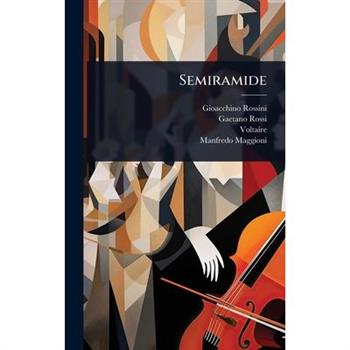

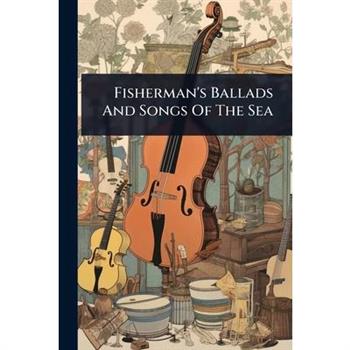
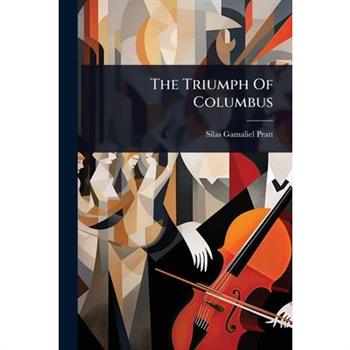
![The Bible Hymn-book [compiled By H. Bonar] The Bible Hymn-book [compiled By H. Bonar]](https://cdn.kingstone.com.tw/english/images/product/5083/9781024835083m.jpg?Q=fdcdd)
